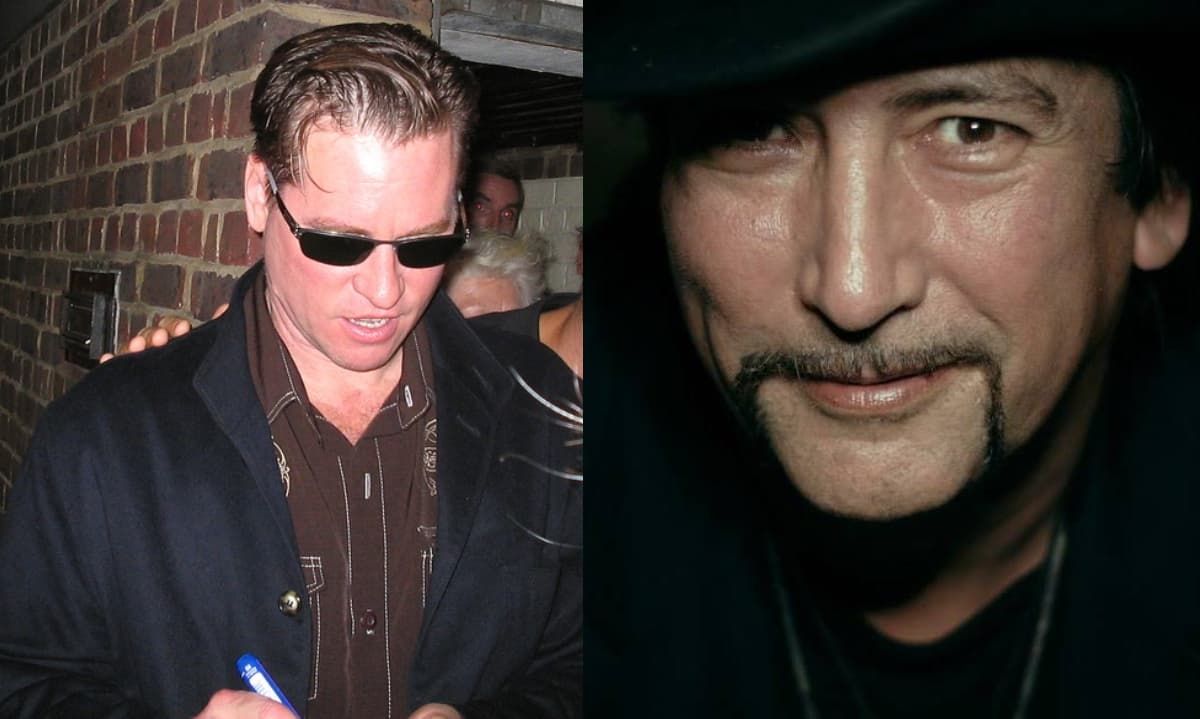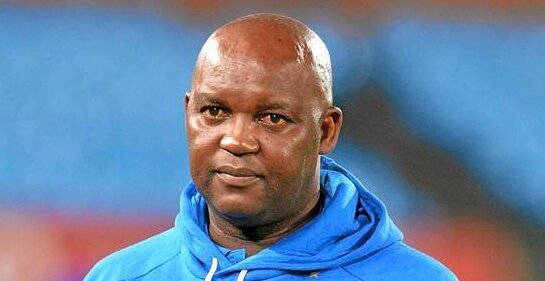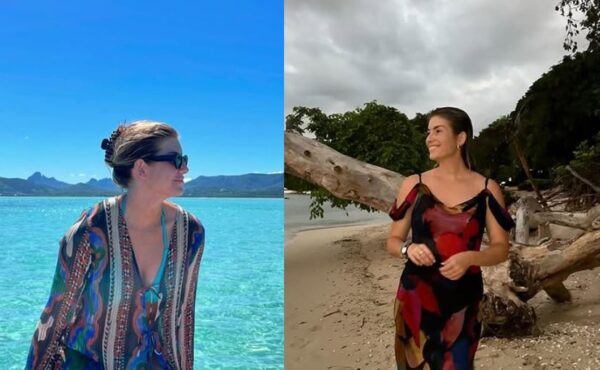By now, you have probably heard that one of Hollywood’s legendary uber egos, Val Kilmer died last week at the young age of 65, from pneumonia.
They say one shouldn’t speak ill of the dead… but in Kilmer’s case, I’m willing to make an exception.
Apart from being a superstar, Kilmer had another prominent talent; acting like an 18-carat, major league, A-list, Hollywood a**hole.
Nowhere was that more apparent than in the way he destroyed the movie – and career – of one of South Africa’s most talented upcoming filmmakers, Richard Stanley.
EARLY SIGNS OF PROMISE (1980S)
Richard Stanley was born in Fish Hoek, Cape Town on 22 November 1966, and was an avid reader and cinephile from a very young age. While in high school in the early 80s, Stanley joined the Young Filmmaker’s Workshop, where he created his first (student) film, Rites of Passage (1983) which won the IAC International Student Film Trophy in 1984.
He followed that up with an ambitious 45-minute short film, Incidents in an Expanding Universe (1985). Again, it won the IAC Gold Seal Award – and laid the groundwork for what would later become Stanley’s feature debut.
After moving to London in 1987, Stanley began directing music videos for bands like Fields of the Nephilim, Pop Will Eat Itself and Renegade Soundwave.
Between 1990 and 1992 Stanley would make two films that cemented his reputation as a prominent rising talent.
‘HARDWARE’ (1990)
The first was his feature directorial debut, Hardware (1990), a cyberpunk sci-fi horror starring Dylan McDermott and Stacey Travis, with cameo appearances by musicians Carl McCoy, Iggy Pop and Motorhead’s Lemmy.
Set in a grimy post-apocalyptic future, the plot follows a discarded, self-repairing, military cyborg that, after being salvaged and brought home by a space marine, reactivates and rebuilds itself, and goes on a rampage in his girlfriend’s apartment.
Despite mixed reviews upon release, Hardware has gone on to be considered a punk cult film. Variety called it “a cacophonic, nightmarish variation on the post-apocalyptic cautionary genre”.
‘DUST DEVIL’ (1992)
In 1992, Stanley returned to his South African roots and followed his first feature with the supernatural horror, Dust Devil, based on a screenplay he wrote when he was 16 years old.
The film follows a mysterious shapeshifting hitchhiker with supernatural abilities who wanders the desert and preys on lost souls. As a detective hunts him down, a young woman fleeing her abusive husband becomes entwined in his dark and ominous path.
Shot in Namibia, the film was a co-production between British, American, South African and Namibian crews, and starred Robert Burke, Chelsea Field and acclaimed South Africa-born actor, the late Zakes Mokae.
Again, the movie divided critics and audiences. In Sight & Sound, Kim Newman described the film as “a hallucinatory, considerable and remarkable film, more personal than Hardware“.
But none of the challenges and problems Stanley had experienced on his films so far could possibly prepare him for what awaited him on his next passion project…
‘THE MADNESS OF DR. MOREAU‘
Stanley’s next film was one of the most anticipated remakes in cinema history; an adaptation of H.G. Wells’ The Island of Doctor Moreau.
The classic 1896 novella is narrated by castaway Edward Prendick, who finds himself shipwrecked on an island dominated by mad scientist Dr Moreau, a bioengineer creating human-animal hybrids (“beast folk”) by splicing their genes – and rules over them as a demigod.
Inspired by the moral and philosophical questions that the story raises, and the themes of humanity, nature, science, morality and religion explored in the novel, Stanley was convinced that the definitive Moreau movie was yet to be made, and spent years working on a script.
The screenplay was picked up by veteran producer Edward R. Pressman (Wall Street, Conan the Barbarian) who then took the project to New Line Cinema.
New Line, the film and TV production company, was impressed with what Stanley had written, as well as the stunning concept art created by poster virtuoso Graham Humphreys, and agreed to green-light the project.
BAGGING BIG, BAD BRANDO
Stanley initially wanted Das Boot star Jürgen Prochnow as his Dr. Moreau, but when heavyweight thespian Marlon Brando expressed an interest in the part, Stanley seized the prospect.
Stanley’s first meeting with Brando turned out to be strangely serendipitous. While getting to know each other, they realised that there was an uncanny connection between them…
After H.G. Wells published Dr. Moreau, Joseph Conrad released Hearts of Darkness. Supposedly, Wells accused Conrad of basing his Kurtz character on Moreau. Conrad denied it, saying the character was in fact based on the explorer, Henry Morton Stanley – who, as it turns out, is Richard Stanley’s relative. And, of course, Brando played Kurtz in Francis Ford Coppola’s war film adaptation of Hearts of Darkness, Apocalypse Now.
What are the chances…
You’d think that alone would be an omen of a smooth, creative, productive shoot.
It wasn’t.
ENTER (AND EXIT) BRUCE WILLIS AND JAMES WOODS
Initially, Bruce Willis was cast to play the castaway, Edward Douglas (Prendrick in the novel), and James Woods was signed to play Montgomery.
However, Willis withdrew due to marital problems with then-spouse Demi Moore (that would eventually lead to their divorce in 1998.)
That’s when Stanley made what he believes to be his biggest strategic mistake on the film.
CASTING VAL KILMER
Hot off the back of Batman Forever, Kilmer was at the peak of his career and thus could get away with all kinds of demands. One of the first things he demanded from Stanley’s production was to have 40% of his shooting days cut from the schedule.
It was decided by the producers that the only way Kilmer could make the shooting schedule was if he took the role of Montgomery instead. And so, James Woods was replaced by Kilmer.
The part of Edward Douglas would eventually go to David Thewlis (Naked, Wonder Woman).
And then, another devastating disaster…
BRANDO STRUCK BY FAMILY TRAGEDY
The day before principal photography was due to start on location in Cairns, Australia, on 17 April 1995, Marlon Brando’s daughter died by suicide, putting the production temporarily on hold while he was away and grieving.
Filming recommenced with Stanley trying to shoot around Brando’s scenes, but from day one things quickly took a turn for the worse.
Kilmer clashed with Stanley and the rest of the crew repeatedly. His behaviour was reportedly erratic and unprofessional, causing delays and tension on set.
KILMER’S CAMPAIGN OF SABOTAGE
Some of Kilmer’s diva antics included shooting down every proposed scene or setup Stanley suggested, refusing to follow directions, and constantly showing up late to filming. He even went so far as to rewrite his own dialogue, causing confusion among the rest of the cast.
Stanley tried to work around Kilmer’s tantrums, but it became clearly apparent to cast and crew that the actor was intentionally sabotaging the production.
At one point, Brando reportedly told Kilmer: “Your problem is, you confuse your talent with the size of your paycheck.”
Sadly, that’s as far as Brando went in standing up for Stanley.
Stanley later said he’d hoped that Brando would back him up or come to his rescue.
He didn’t.
MUTINY ON THE ISLAND
It all came to a head when Kilmer cornered executive producer Tim Zinnemann and coerced him to fire Stanley.
In early August 1995, instead of supporting their visionary director, the producers caved to the spoilt brat prima donna actor and removed Richard Stanley from his own movie – before principal photography had even begun. A film he spent years writing, developing and hustling.
That is also where the saga should have ended for Stanley… but it didn’t.
You couldn’t dream up what happened next.
One of the production assistants, Oli Dickson, was ordered by the producers to drive Stanley to the airport and make sure he got on the plane.
Dickson explained in an interview: “I remember dropping him at the airport, he was there on time. But the next morning I got a phone call saying, ‘Where the hell is Richard Stanley’?”
REPLACED BY JOHN FRANKENHEIMER
Stanley was replaced with veteran director, John Frankenheimer (The Manchurian Candidate), last of the “tough-guy” directors, with an excellent reputation for wrangling difficult actors.
According to actress Fairuza Balk (cast as the “cat girl”, Aissa), “that was the beginning of the nightmare”.
Yes, apparently the insanity on the island didn’t stop after Stanley left.
BRANDO GOES BATSH*T CRAZY
Now it was Brando who appeared to be doing his best to derail proceedings – by, among other things, ignoring the script, failing to learn his lines, insisting on wearing white makeup on his face and, in one scene, acting with an ice bucket on his head, for no apparent reason.
He also wanted to shut down the production for 6-to-8 weeks and rewrite the script with Frankenheimer – including a finale revealing that Dr. Moreau was in fact…a dolphin in disguise. (No, I’m not making that up.)
Also, Brando and Kilmer were headbutting creatively more and more as the production progressed.
Indeed, as behind-the-scenes movie lore would have it, a kind of hedonistic insanity had bled into the entire production, and Frankenheimer found it increasingly impossible to control his actors – especially Kilmer. At one stage Frankenheimer reportedly yelled: “Even if I was directing a film called The Life of Val Kilmer, I wouldn’t have that prick in it!”
The last straw that finally saw the crew turn totally against Kilmer was when he burned the sideburns of a focus-puller with a lit cigarette – in the middle of a scene, while the cameras were rolling.
RICHARD SNEAKS BACK ON SET, AS A DOG
It later surfaced in the biopic documentary about Kilmer, VAL, that while on that shoot, Kilmer received news that his wife of seven years, actress Joanne Whalley, was divorcing him.
Meanwhile, unbeknownst to Frankenheimer and practically everyone on the production, Richard Stanley had snuck back to the set, donned a “mutant dog” costume, and passed himself off as one of the extras – for practically the entire remainder of the shoot.
Frankenheimer tried to salvage the film, but it was too late. The damage had been done, and the film was doomed to failure.
‘ONE OF THE WORST MOVIES EVER MADE‘
The Island of Dr. Moreau was released in 1996 to scathing reviews, with some audiences and critics slating it as one of the worst movies ever made, and others calling it “a train-wreck of gargantuan proportions”.
The film was a commercial and critical failure, and Richard Stanley’s career was left in tatters. Val Kilmer’s behaviour on set had destroyed the film and Stanley’s reputation.
Stanley would later admit in an interview: “The perception of me in Hollywood at that point in time is that I never existed. My agents never returned any of my phone calls.”
‘LOST SOUL’ TELLS ALL
In 2014, director David Gregory released a documentary called Lost Soul: The Doomed Journey of Richard Stanley’s Island of Dr. Moreau.
Through rare behind-the-scenes footage and interviews with cast, crew and producers, Gregory unravels the truth behind the rumour, and pieces together the whole, sordid, surreal and nightmarish debacle of what really happened between Stanley, Brando and Kilmer on that cursed production.
According to cast, crew and producers, after that film wrapped, “Richard Stanley just vanished into the wilderness”.
Fairuza Balk said she bumped into him in London years later and noticed he was still depressed from the experience. Apparently, Stanley told her, “I don’t think I’ll ever make another movie again. I can’t even bear the idea of being behind a camera. It makes me wanna scream”.
Stanley eventually retreated to a reclusive life in a decrepit château in the mountainous regions of Montségur in the French Pyrenees.
Thankfully, for him and his fans, Stanley did eventually get back in the saddle and behind a camera again.
‘COLOR OUT OF SPACE’ (2019)
After more than 20 years off the reservation, Richard Stanley finally made a big comeback to the silver screen in 2019 with an adaptation of H.P. Lovecraft’s horror Color Out of Space, starring Nicholas Cage (in a glowing performance) and Joely Richardson.
It was released to mostly favourable reviews from critics and rave reviews from audiences.
RIP, BROTHER, NO HARD FEELINGS
Last week, on 2 April, the day after Val Kilmer’s death, Richard Stanley posted the following eulogy on his Facebook page (extract):
“Ave Val. RIP, compadre. You were my friend too, once upon a time. I saw you at your finest as well as your worst. I saw the potential for greatness in you, that weird, tricky light that only true stars possess.
You seemed to breathe a different air from the rest of us who followed in your train. Perhaps we when your star burned brightest…before the dark days on the Island began its slow occultation. Perhaps, like Icarus, we flew too close to the light, compelled as we were to push it to the max.
At least we parted on good terms. That hug meant something, even if it was too late to save the Island. My only regret is we cannot turn back the blessed clock and get it right next time.
In another life, perhaps.
Until then, go in peace, brother. A candle burns for you this night in the French Pyrenees.” – RS x
Richard Stanley is currently working on what he hopes will be the second feature in his Lovecraft trilogy, a remake of The Dunwich Horror.
Welcome back, Maestro.
HAVE YOU SEEN ANY OF RICHARD STANLEY’S FILMS? ANY FAVOURITES?
Let us know by leaving a comment below or send a WhatsApp to 060 011 021 1.
Subscribe to The South African website’s newsletters and follow us on WhatsApp, Facebook, X, and Bluesky for the latest news.














